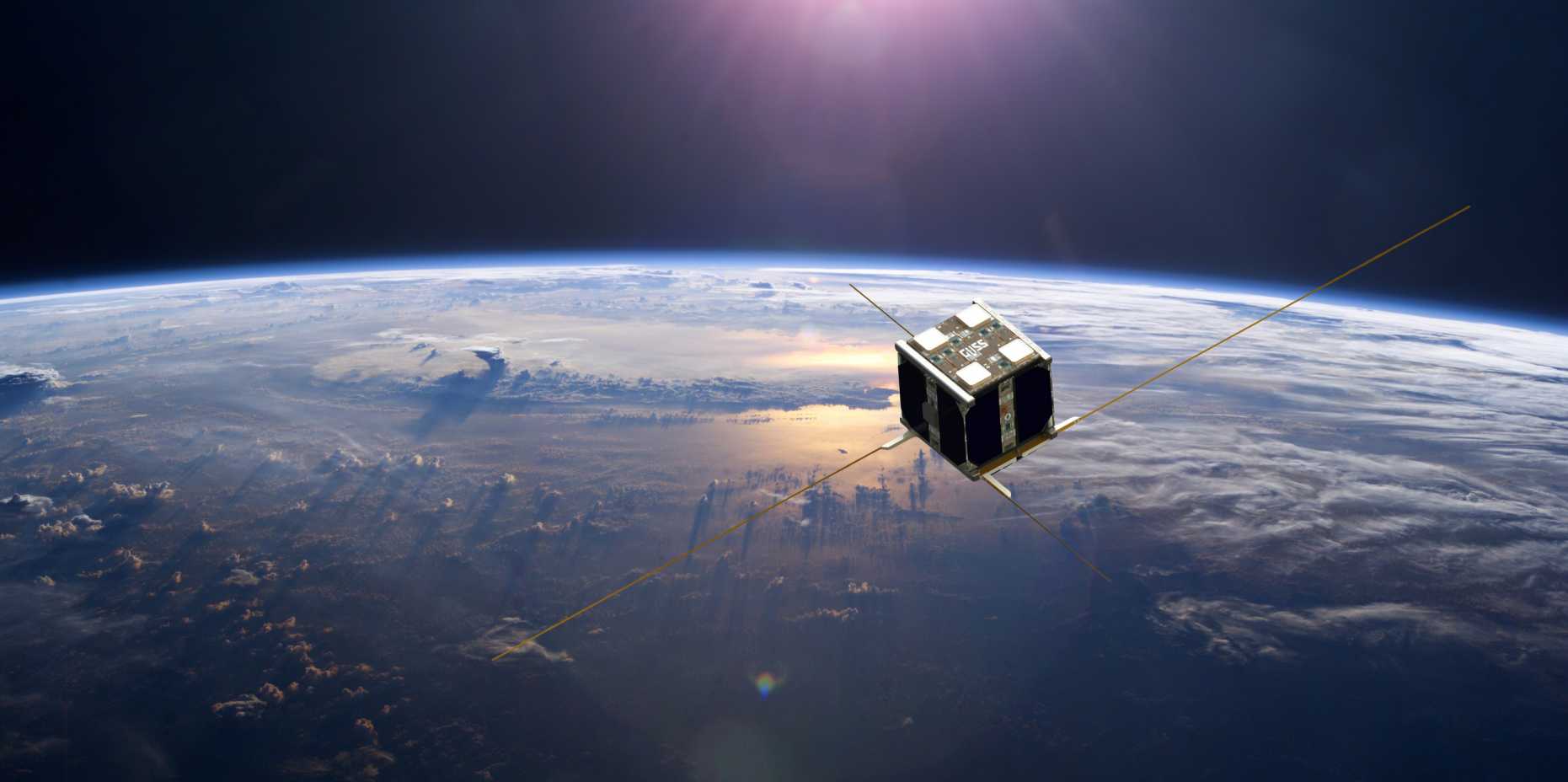Nano satellites
The era of tracking artifical Earth satellites using Global Navigation Satellite Systems (GNSS) began in the early 1980s when a GPS receiver was flown on-board the Landsat-4 mission. Since that time a large number of Low Earth Orbiters (LEO) were using constantly improved GPS receivers for timing, positioning, radio science and other applications. Apart from Earth observation missions, a number of small satellites carrying GPS-related payloads were launched in recent years. As the miniaturization of satellite components advances and their costs get lower and lower, small satellite missions – today primarily used for technology demonstration and education – will become ever more interesting for a large variety of applications.
With the Nano satellite mission CubETH and the GNSS payload board, our group is very active in this innovative field of research.
Project list:
Precise orbit determination based on low-cost GNSS receivers on-board the Astrocast Nano satellites
The CubeSat standard for Nano satellites is typically defined as a cube weighing up to 1.3 kilograms and measuring 10 centimeters on each side. Thanks to the use of increasingly miniaturized, low-cost sensors and the relatively economical to send Nano satellites into space on commercial rideshare launch vehicles, Nano satellites have now become a boom and an affordable option for companies, universities, and even private individuals. With the increasing popularity of miniaturized satellites, the need for an adapted payload for orbit determination arises. We developed a small-size versatile GNSS payload board using commercial off-the-shelf GNSS receivers with an extremely small weight, size, and power consumption. The board features two separate antenna connectors and four GNSS receivers. This redundancy lowers the risk of a total payload failure in case one receiver is malfunctioning. Two prototypes of the GNSS positioning board have been launched onboard two Astrocast 3-unit cube satellites. The satellites are also equipped with a small array of three laser retroreflectors enabling orbit validation with Satellite Laser Ranging. With the support of ILRS, select stations tracked the two Precursor satellites. This project focuses on precise orbit determination and various experiments on orbit. The different aspects of precise orbit determination have been investigated that include the robust orbit fitting using different orbit dynamic parameters and stochastic pulses, air drag modeling and correction, the estimation and constrain of the empirical acceleration in along-track, ionospheric error correction of onboard single-frequency observations, maneuver planning for constellation maintenance, precise estimation of the thrust force and the orbit change performed during the satellite maneuvers.
Start date:
03.12.2018
Project partners:
Astrocast SA
Contacts at MPG:
Kangkang Chen ()
Lukas Müller ()
Markus Rothacher ()
Links:
https://mpg.igp.ethz.ch/cubeth.html
external pagehttp://www.esa.int/Applications/Navigation/CubeSat_finds_its_way_in_space_with_Galileo_receivercall_made
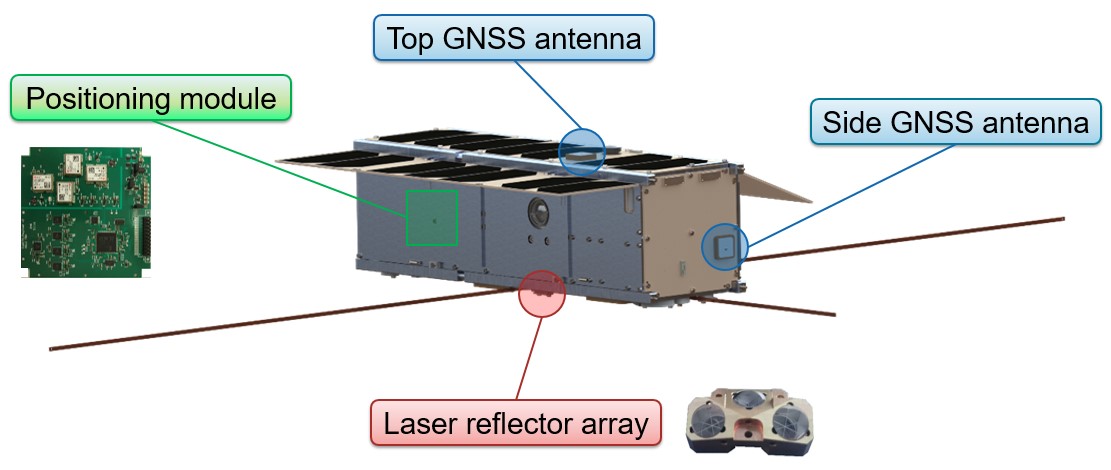
Geodetic parameter estimation based on GNSS observations on-board Nano satellite constellations
The number of Nano satellites launched into space has increased rapidly in recent years. This project investigates the potential of the emerging Nano satellite constellations for estimating parameters related to the Earth's gravity field, the GNSS satellite orbits and antenna phase center corrections. Large satellite constellations allow the formation of a uniform, dense and highly dynamic GNSS network in space, which can provide a much more homogeneous observation geometry compared to a ground-based GNSS network or a single LEO satellite. Therefore, we expect that processing such a GNSS network on Nano satellites will benefit geodetic parameter estimation.
Start date:
01.10.2019
Project partners:
Astrocast SA
Contacts at MPG:
Lukas Müller ()
Markus Rothacher ()
Links:
-
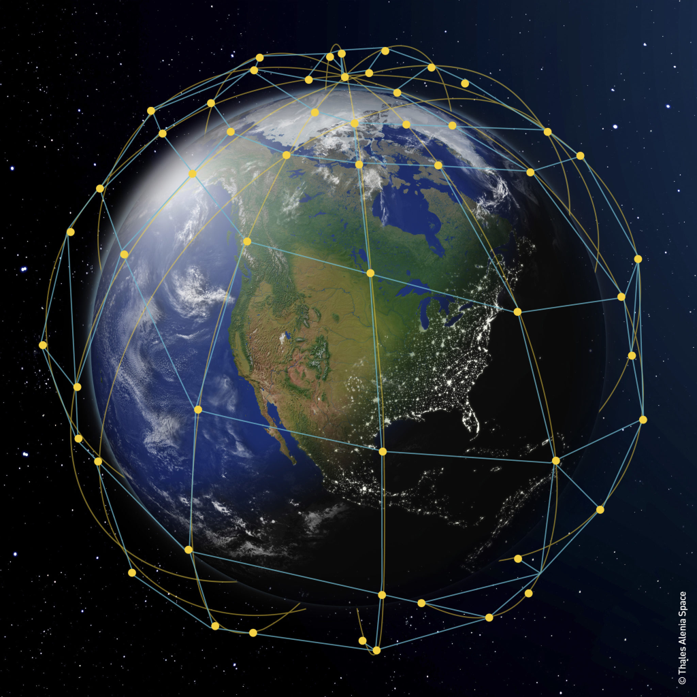
Testing of the u-blox ZED-F9P GNSS receivers for operation in space
Together with Swiss partners MPG has developed a GNSS positioning module for Nano satellites. The core part of this module is a commercial-off-the-shelf GNSS receivers from the Swiss company u-blox. This receiver is built for Earth-bound applications. Thus, for space applications a series of environmental tests has to be carried out. These tests will reveal whether the receiver is functioning well in a harsh space environment.
Start date:
01.12.2019
Project partners:
RUAG Space, EPFL
Contacts at MPG:
Gregor Möller ()
Markus Rothacher ()
Links:
https://mpg.igp.ethz.ch/cubeth/payload/details/tvc.html
external pagehttps://www.tu-berlin.de/?183539call_made
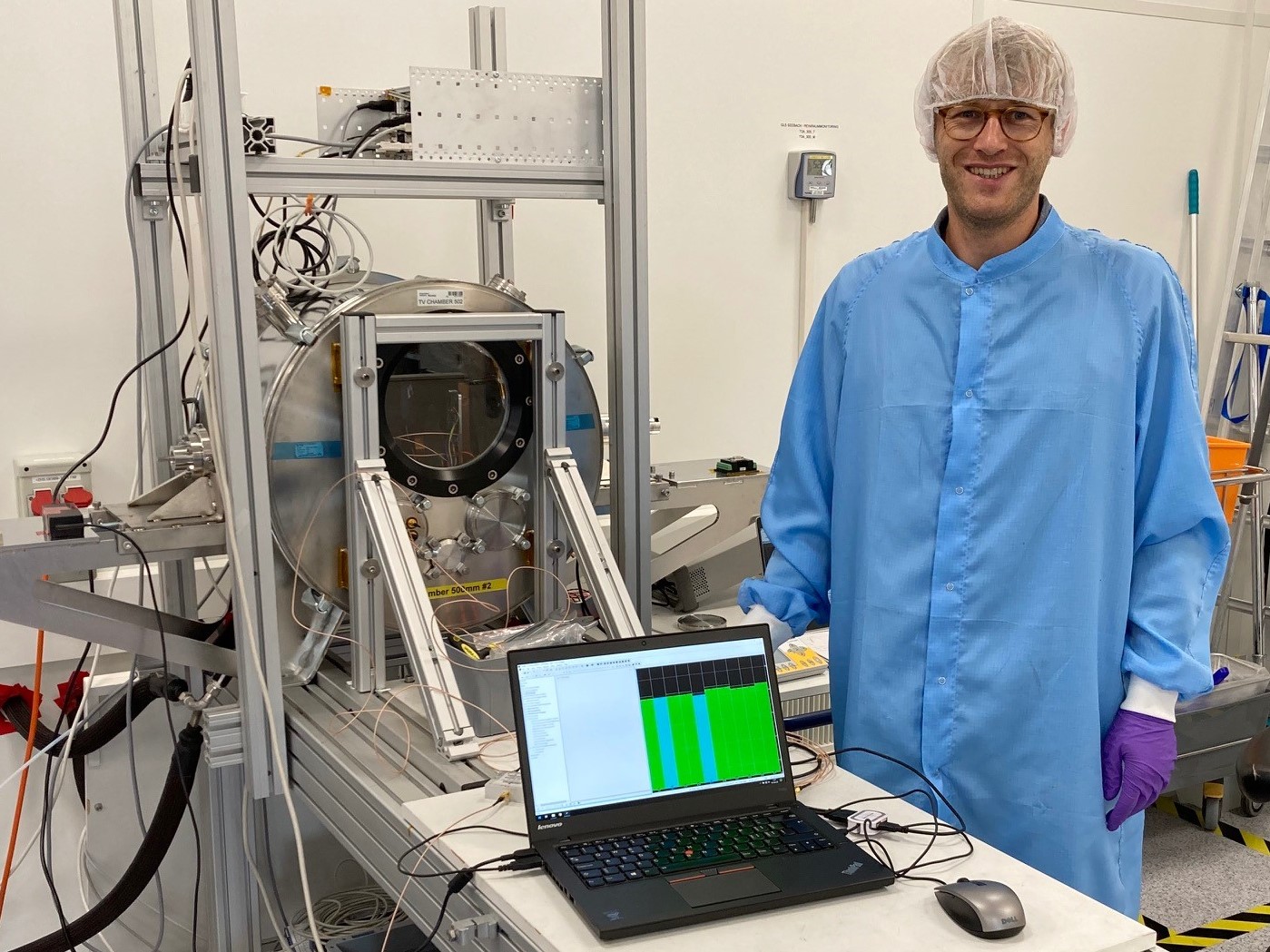
An experimental GNSS receiver for picosatellite swarm missions
At TU Berlin a picosatellite swarm mission is developed consisting of the four quarter-unit CubeSats BEESAT-5 to BEESAT-8 with a mass of 375 grams each. The picosatellites were designed fully redundant and almost complete single-fault tolerant. The primary mission objective is to demonstrate a newly developed communications subsystem in the UHF band and an experimental GNSS receiver. MPG supports this mission with a modified GNSS receiver for precise orbit determination. The intended launch of the satellites is March 2021.
Start date:
01.03.2019
Project partners:
TU Berlin
Contacts at MPG:
Markus Rothacher ()
Gregor Möller ()
Links:
-
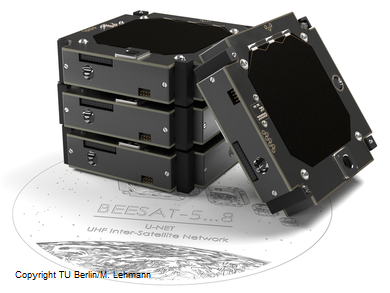
Development of a GNSS payload board for the Swiss CHESS mission
The EPFL Spacecraft Team is taking on a new challenge. Together with six universities, three companies, 15 professors and 53 students they are developing a constellation of two satellites, called CHESS. The satellites will also feature next-generation Global Navigation Satellite System (GNSS) receivers that are lighter, less expensive, and more accurate than existing models. The payload board, which will carry the new receivers is currently being developed by ETH Zurich. This includes a redesign of the CubETH heritage board, new interfaces for the data exchange and communication with the on-board computing system as well as a new payload software for a more reliable control, update and flexible modification of the receiver settings from ground.
Start date:
01.04.2021
Project partners:
EPFL
Contacts at MPG:
Flavio Kreiliger ()
Markus Rothacher ()
Gregor Möller ()
Alexander Wolf ()
Links:
external pagehttps://actu.epfl.ch/news/epfl-moves-boldly-into-space-with-its-chess-satell/call_made
https://mpg.igp.ethz.ch/cubeth/payload.html
Demonstration of Galileo capabilities in-orbit for low cost receivers on a CubeSat
Global Navigation Satellite Systems are nowadays one of the standard techniques for orbit and attitude determination. A Galileo-capable GNSS payload dedicated for CubeSat missions with low-cost commercial-off-the-shelf receivers has been developed at MPG. The redundancy of four receivers and two antennas has been a very good concept. It not only provides redundancy (e.g. in view of the antenna degradations) but also allows us to perform a variety of different tests to validate the GNSS payload performance. The concept of having more than one receiver also enables us to perform critical tests without affecting the onboard receiver navigation solution and the timing that needs to be reliably provided to the satellite bus. A special feature of the integrated receivers is their multi-GNSS capability allowing the concurrent tracking of satellites from the four major systems GPS, GLONASS, BeiDou, and Galileo. This project has the goal to study the precise orbit determination and timing in space using low-cost GNSS receivers with different GNSS constellations, especially to demonstrate the capabilities of Galileo in orbit. The GNSS payload is performed onboard the two Astrocast precursor missions, Astrocast-01 and -02 3-unit cube satellites with altitudes of 575 and 500 km, respectively. The performance of various single-system and multi-GNSS solutions has been analyzed putting a special emphasis on solutions including observation data from the Galileo system. The receivers on board the satellites can collect raw GNSS code and phase observations on L1 frequency from all major GNSS. The analysis of these raw code and phase measurements shows that the receivers record observations down to -23 degrees below the horizon. The GNSS payload has been continuously producing navigation solutions at the level of a few meters in real-time, and an orbit accuracy below 1 m in post-processing is achieved. This is an excellent result in view of the fact that the GNSS payload has a total weight of only about 100 g, the power consumption of a mere 100 mW, and costs of below 1000 €.
Start date:
23.05.2017
Project partners:
-
Contacts at MPG:
Markus Rothacher ()
Kangkang Chen ()
Financiers (external)
ESA GSSC (Galileo Science Support Center)
Links:
external pagehttp://www.esa.int/Applications/Navigation/CubeSat_finds_its_way_in_space_with_Galileo_receivercall_made


